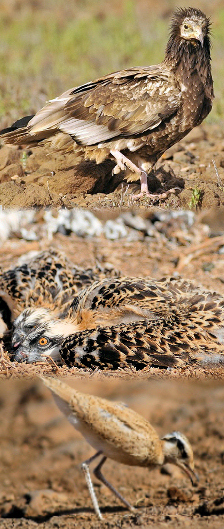A CAGARRA
Boletim de Sociedade Caboverdiana de Zoologia
Edited by | Editado por Cornelis J. Hazevoet cjhazevoet at gmail.com
No. 9 - MARCH / MARÇO DE 2015

Have you seen, heard or read something of zoological interest? Let us know!
Viu, leu ou ouviu algo com interesse zoológico recentemente? Informe-nos!
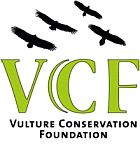 In
The Egyptian Vulture Neophron
percnopterus is a globally endangered
species, with almost all populations worldwide undergoing a strong
decline. The species used to be widespread in Cape Verde until about 25
years ago, but in the last few decades it underwent a very rapid
decline and virtually disappeared from the country. In Cape Verde, like
in other archipelagos (Canary islands, Balearics, Socotra), the
Egyptian vulture is sedentary - most other populations are migratory,
with Eurasian birds spending the winter in Africa, the Arabian
Peninsula and the Indian subcontinent.
In
The Egyptian Vulture Neophron
percnopterus is a globally endangered
species, with almost all populations worldwide undergoing a strong
decline. The species used to be widespread in Cape Verde until about 25
years ago, but in the last few decades it underwent a very rapid
decline and virtually disappeared from the country. In Cape Verde, like
in other archipelagos (Canary islands, Balearics, Socotra), the
Egyptian vulture is sedentary - most other populations are migratory,
with Eurasian birds spending the winter in Africa, the Arabian
Peninsula and the Indian subcontinent.Recently the VCF, CIBIO (Portugal) and the University of Cape Verde joined forces to try to establish the current status of the species in Cape Verde, with generous support of a small Grant from the Association Francaise de Parcs Zoologiques (AFdPZ). In December, two Cape Verdean biologists spent 10 days doing fieldwork in Santo Antão, one of the islands where the species still survives, to collect data and information. The biologists did 241 interviews all over the island, covering subjects like the presence of the bird, the number of cattle heads present, the use of pesticides and poison, and surveyed garbage dumps and slaughterhouses. They found that indeed Egyptian vultures are still present. They mapped 26 recent observations of the species (in the last 5 years), with the most recent observation in December 2014 in the Porto Novo area, where an Egyptian vulture was seen eating a dead pig. Some of these observations relate to a pair seen together. The species seems to have declined substantially after widespread chemical fumigation on the island in 1988, to try and control a grasshopper plague then affecting the local populations. Other threats identified were the use of poison to control feral dogs and the reduced availability of food for Egyptian vultures – fish, traditionally salted and dried on the beaches, resulting in plenty waste products available to the vultures, is now sent fresh to São Vicente, while the carcasses of dead cattle are now buried. If we add this to the increased sanitization of villages and urban development, one begins to understand the reasons behind the species’ demise. The survey mapped four active garbage dumps, with the largest one in Aguada. There is only one slaughterhouse on Santo Antão (at João de Dias, Ribeira Grande), where the remains of animals are buried or incinerated, but local people still traditionally kill animals throughout the countryside, abandoning some animal parts, which are usually eaten by dogs. The project will now survey the species in other islands, while a conservation plan will be developed later on. Follow the project at the VCF site www.4vultures.org.
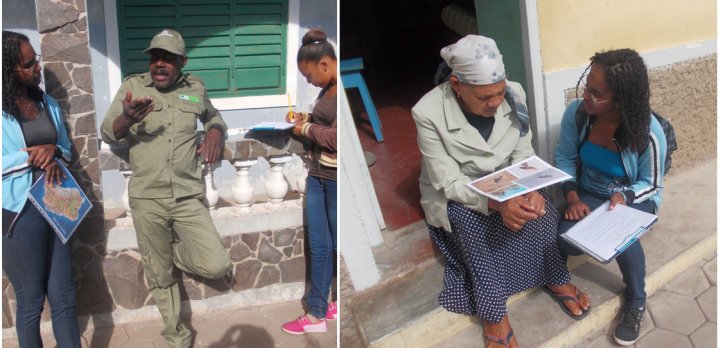
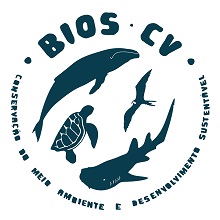 Pedro López Suárez provided an
oversight of breeding success and other reproductive parametres of the
osprey Pandion haliaetus
in Boa Vista. As can be seen in the Table below, there was a peak in
breeding success during the years 2005-2006 and a low (with zero young
fledged) in 2013. With four young fledged, productivity in 2014 was
back at the level of 2001-2004. The reasons behind these fluctuations
are currently being analyzed and a full report will be published in due
course. As yet, the ospreys have not made use of the artificial nest
platforms placed in Boa Vista in 2014 (see A Cagarra No. 8).
Pedro López Suárez provided an
oversight of breeding success and other reproductive parametres of the
osprey Pandion haliaetus
in Boa Vista. As can be seen in the Table below, there was a peak in
breeding success during the years 2005-2006 and a low (with zero young
fledged) in 2013. With four young fledged, productivity in 2014 was
back at the level of 2001-2004. The reasons behind these fluctuations
are currently being analyzed and a full report will be published in due
course. As yet, the ospreys have not made use of the artificial nest
platforms placed in Boa Vista in 2014 (see A Cagarra No. 8).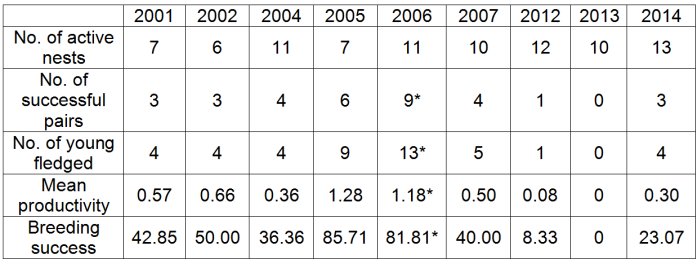
Survey of cream-coloured courser in Maio
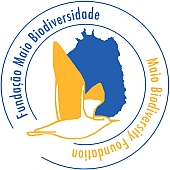 From April to
November 2013, a census of the cream-coloured courser Cursorius cursor
was carried out on the island of Maio in order to better understand its
habitat requirements and distribution, as well as obtaining an estimate
of population size. Nesting sites were searched for, adults and young
were colour-ringed and blood samples were taken. A total of 282
individuals was observed during 99 point transect counts. Most birds
were seen in the eastern and southern part of the island. The first
nests were found in August, after the first rains. Seven nests were
found at the Salinas do Porto Inglês, but only one of these hatched
succesfully. One nest contained four eggs, the others 1-2 eggs. Five
nests disappeared, while one nest was predated, presumably by
brown-necked raven Corvus
ruficollis. In addition, two family parties with fledged
young were seen. A full account of the survey will be published in Zoologia Caboverdiana.
From April to
November 2013, a census of the cream-coloured courser Cursorius cursor
was carried out on the island of Maio in order to better understand its
habitat requirements and distribution, as well as obtaining an estimate
of population size. Nesting sites were searched for, adults and young
were colour-ringed and blood samples were taken. A total of 282
individuals was observed during 99 point transect counts. Most birds
were seen in the eastern and southern part of the island. The first
nests were found in August, after the first rains. Seven nests were
found at the Salinas do Porto Inglês, but only one of these hatched
succesfully. One nest contained four eggs, the others 1-2 eggs. Five
nests disappeared, while one nest was predated, presumably by
brown-necked raven Corvus
ruficollis. In addition, two family parties with fledged
young were seen. A full account of the survey will be published in Zoologia Caboverdiana.NOTÍCIAS ZOOLÓGICAS DE JORNAIS
A Semana, 20 de Dezembro de 2015
Santos Ribeiro, agricultor da localidade de Figueira é um dos aflitos com esta situação que se disponibilizou para conversar com a Inforpress sobre o assunto. Segundo disse, este ano estão a deparar-se com um duplo problema, a falta de água nos poços e consequentemente, pouca produção, e para agravar ainda mais a situação estão a caminhar já para o desespero porque já não conseguem suportar a invasão das galinhas do mato aos campos de lavoura. Santos Ribeiro explicou que tem sido uma luta com enorme sacrifício para se conseguir controlar o possível, sentindo-se obrigados a levantarem-se cedo para se deslocarem às suas propriedades agrícolas para montarem a guarda e só deixarem o local quando começa a anoitecer, altura em que as galinhas recolhem-se também às tocas. “Consideramos esta situação uma autêntica praga. No meu caso concreto saio da minha casa às 05:00 da manhã e só regresso por volta das 07 ou 08:00, mas mesmo assim não queremos matá-las, porque entendemos que é uma dádiva de Deus e porque se decidirmos matá-las sabemos que podem desaparecer da natureza, por isso limitamos apenas a afugentá-las esperando pela vinda das chuvas”, frisou. Este agricultor disse por outro lado à Inforpress estar consciente de que essas aves têm também funções importantes no meio ambiente e por isso, matá-los poderia perigar o equilíbrio ambiental.
A título de exemplo apontou ainda o caso dos cavalos que, segundo disse, praticamente já não existem na ilha do Maio. “Não há exemplares sequer para sua reprodução, e por essa razão preferimos continuar a defender os campos aguardando pela chegada das chuvas que resolvem o problema produzindo alimentos também para esses animais”, sustentou. Luciano Ribeiro Silva é um outro agricultor que contou também a sua história à Inforpress sobre o combate à invasão das galinhas do mato, “lutando para salvar o pouco que se consegue produzir”. “Estou a fazer algumas armadilhas para caça-las, mas isso é insuficiente porque são muitas, mas estamos conscientes de que devemos fazer o nosso papel de guardiões e esperar pelas chuvas para que possam conseguir alimentos longe das nossas propriedades, porque acabar com eles não é uma boa alternativa, não obstante os prejuízos que temos vindo a encaixar”, indicou. Paradoxalmente, no meio de toda essa história a Inforpress foi abordada também por gente que se diz desconte com a “caça desenfreada” de galinhas do mato por parte de alguns estrangeiros. Segundo alegam, nesse ritmo dentro de poucos anos esta espécie poderá desaparecer na ilha.
Expresso das Ilhas, 15 de Março de 2015
Publicações recentes sobre zoologia e paleontologia Caboverdiana
Evolution of island warblers:
beyond bills and masses. Bernd Leisler & Hans
Winkler, 2015.
Journal of Avian Biology 45; http://dx.doi.org/10.1111/jav.00509
ABSTRACT In this paper, we take a closer look into the
evolution of Acrocephalus
warblers on islands in the Atlantic, Indian and Pacific Oceans. The
shape-related morphological evolution of island species is
characterized by changes in the hind limb, flight, and feeding
apparatus. Birds on islands converged to a morphology with strong legs,
shorter rictal bristles, and rounder, more slotted and broader wings.
Because of their high variance among islands, body size and bill
dimensions did not contribute to the separation of continental and
island forms, although bills tend to be longer on islands. The wings of
island birds hardly vary among islands, unsurprisingly due to a lack of
the adaptive features associated with long distance flights. The
tendency towards shorter rictal bristles in the island warblers can be
explained by the diminished role of aerial feeding, and closer contact
with various substrates in the course of extractive foraging. The shift
towards stronger legs in several insular species is remarkable because
reed warblers on continents have even stronger legs than other
passerines of comparable size. This trait correlates with diverse,
acrobatic feeding techniques that are typically associated with broad
habitat use. Bills reach extreme lengths on some islands. However,
short bills occur as frequently, rendering this character highly
variable among islands. Short bills indicate gleaning feeding
techniques, whereas long bills are typical for species that pursue
hidden and difficult-to-access prey. Body sizes differ greatly from
island to island. On average, the sizes of island birds do not differ
from continental ones, however. We suggest that vegetation clutter is
the major driving force for this variation. The main conclusion
following from our results is that evolution on islands pertains to all
functional complexes, and not only the hitherto studied body size and
bill dimensions.
[SCVZ EDITOR’S NOTE: Comparative study on
the evolution of morphological traits in acrocephaline warblers on
islands, including Cape Verde warbler Acrocephalus brevipennis.]
Salto de pardal – Os segredos de um pardal cabo-verdiano que ajuda a contar a história da evolução. Alexandre Vaz, 2015. National Geographic Magazine (Portugal), January 2015: 92-99.
[No abstract; popular account
of research on Passer
iagoensis.]
Effects of hook and bait in a
tropical northeast Atlantic pelagic longline fishery: Part I-Incidental
sea turtle bycatch. Rui Coelho, Miguel N. Santos, Joana
Fernandez-Carvalho & Sérgio Amorim, 2014. Fisheries
Research; http://dx.doi.org/10.1016/j.fishres.2014.11.008
ABSTRACT
The interaction between tuna fisheries and sea turtles is commonly
recognized as one of the major threats and causes for the decline of
sea turtle populations. Within the tuna and swordfish fisheries, the
incidental sea turtle bycatch is usually more frequent from longline
fisheries targeting swordfish. Therefore it is important to test
possible mitigation measures, particularly in areas where fishing
activities and high abundance of these species overlaps, as is the case
of the Tropical Northeast Atlantic Ocean. Between August 2008 and
December 2011, a total of 202 experimental pelagic longline sets were
carried out in that region (latitude: 11–22ºN, longitude: 20–38ºW). The
aim was to test the effects of changing the traditional J-style hooks
(10º offset) baited with squid used by the fishing industry, against
two circle hooks (one non-offset and one with 10º offset) and mackerel
bait. Four sea turtle species were captured, with the leatherback Dermochelys coriacea
comprising most of the bycatches (BPUE, bycatch per unit of effort
using the traditional configuration of 0.990 turtles/1000 hooks),
followed by three hardshell species: the loggerhead Caretta caretta and
the olive ridley Lepidochelys
olivacea (BPUE = 0.165 turtles/1000 hooks), and the Kemp
ridley Lepidochelys
kempii
(BPUE = 0.024 turtles/1000 hooks). In general, the sea turtle
interactions in the fishery can be reduced by changing from the
traditional gear to one of the experimental combinations. However,
those reductions were species-specific, with the leatherback bycatches
reduced only when changing from J-style to the non-offset circle hook,
while for the hardshell turtles both the hookstyle (using a circle
hook, with or without offset) and the bait (using mackerel)
significantly reduced the incidental bycatches. Hooking location was
also species-specific, with most hardshell specimens hooked by the
mouth and esophagus, while leatherbacks were mostly hooked externally
by the flippers. Most of the sea turtles were captured and released
alive with the mortality rates independent of the hook style and bait
type used. A reduction of 55% in leatherback incidental bycatches can
be expected in this fishery by changing from J-style to circle hooks,
whereas for the hardshell species a 50–59% reduction can be obtained by
changing to circle hooks (respectively with and without offset), and a
55% reduction by usingmackerel bait.
Effects of hook and bait in a
tropical northeast Atlantic pelagic longline fishery: Part II-Target,
bycatch and discard fishes. Joana Fernandez-Carvalho, Rui
Coelho, Miguel N. Santos & Sérgio Amorim, 2014. Fisheries
Research; http://dx.doi.org/10.1016/j.fishres.2014.11.009
ABSTRACT
The incidental bycatch of sea turtle in tuna and swordfish fisheries is
currently recognized as one of the major threats to the populations of
these species. Therefore a number of mitigation measures have been
tested, particularly for longline fisheries targeting swordfish. As
mitigation measures may also affect the fish catches, it is important
to quantify these impacts both at the ecological and socio-economic
levels. Between August 2008 and December 2011, a total of 202
experimental pelagic longline sets were carried out in the Tropical
Northeast Atlantic Ocean. The combination J-hook baited with squid
(traditionally used by the fishery) was compared against two circle
hooks (one non-offset and one with 10º offset) and mackerel bait.
Catches per unit effort (CPUE) were calculated and compared between the
different hook style and bait combinations for all target, bycatch and
discarded fish species. In addition, a GLM (generalized linear model)
was applied for swordfish Xiphias
gladius and blue shark Prionace glauca
(two main target species) and bigeye thresher Alopias superciliosus
(most discarded species). The swordfish catches were negatively
affected when changing from the traditional gear (J-style hooks baited
with squid) to one of the experimental combinations, with the bait type
having a stronger influence than the hook style on this reduction.
However, the overall target species CPUE and the value of the retained
catch (VPUE, value per unit of effort) were not significantly affected,
due to an increase on the blue shark CPUE. Furthermore, the hook style
and the bait type did not seem to influence the at-haulback mortality
rates of most discarded species, which were highly species-specific.
Given the apparent lack of impact on the overall value of the retained
catch, the use of circle hooks baited with mackerel on this particular
fishery and region would be highly beneficial for sea turtle
conservation, without affecting the economic viability of the fishery.
Oceanic loggerhead turtles Caretta
caretta
associate with thermal fronts: evidence from the Canary Current Large
Marine Ecosystem. Kylie L. Scales, Peter I. Miller, Nuria
Varo-Cruz, David. J. Hodgson, Lucy A. Hawkes & Brendan J.
Godley, 2015.
Marine Ecology Progress Series 519: 195-207; http://dx.doi.org/10.3354/meps11075
ABSTRACT
Oceanographic fronts are physical interfaces between water masses that
differ in properties such as temperature, salinity, turbidity and
chlorophyll a enrichment. Bio-physical coupling along fronts can lead
to the development of pelagic biodiversity hotspots. A diverse range of
marine vertebrates have been shown to associate with fronts, using them
as foraging and migration habitats. Elucidation of the ecological
significance of fronts generates a better understanding of marine
ecosystem functioning, conferring opportunities to improve management
of anthropogenic activities in the oceans. This study presents novel
insights into the oceanographic drivers of habitat use in a
population of marine turtles characterised by an oceanic-neritic
foraging dichotomy. Using satellite tracking data from adult female
loggerhead turtles Caretta
caretta
nesting at Cape Verde (n = 12), we tested the hypothesis that oceanic-
foraging loggerheads associate with mesocale (10s to 100s of km)
thermal fronts. We used high-resolution (1 km) composite front mapping
to characterise frontal activity in the Canary Current Large Marine
Ecosystem over 2 temporal scales: (1) seasonal front frequency and (2)
7 d front metrics. Our use-availability analysis indicated that oceanic
loggerheads show a preference for the highly productive upwelling
region between Cape Verde and mainland Africa, an area of intense
frontal activity. Within the upwelling region, turtles appear to forage
epipelagically around mesoscale thermal fronts, exploiting profitable
foraging opportunities resulting from physical aggregation of prey.
Loggerhead conservation in Santa
Luzia Island, Cabo Verde: a partnership with the Sea Shepherd
Conservation Society. Patrícia Rendall Rocha &
Tommy Melo, 2015.
African Sea Turtle Newsletter 3: 10-12. Available at http://oceanecology.org/african-sea-turtle-newsletter/.
[No abstract.]
Age estimation and growth pattern
of the grouper Cephalopholis
taeniops
(Epinephelidae) off the Cape Verde Archipelago, north-west Africa.
O. Tariche, J.G. Pajuelo, J.M. Lorenzo, A. Luque & J.A.
Gonzalez, 2014.
Journal of the Marine Biological Association of the United Kingdom; http://dx.doi.org/10.1017/S0025315414001441
ABSTRACT The grouper Cephalopholis
taeniops
is a carnivorous fish of the Cape Verde coastal marine ecosystem.
Nothing is known regarding the age and growth of this epinephelid. In
this study, the age and growth of C.
taeniops
was investigated by annual growth increment counts from 2804 specimens
(7-51 cm total length) collected between January 2005 and December
2011. Whole otoliths underestimated the age indicated in sections by
approximately 70%; therefore, sectioned otoliths were used in this
study. A year’s growth was represented by one opaque and one
translucent ring. There was no apparent time lag from the start of the
increase in the seawater temperature and the beginning of the formation
of the opaque ring. The formation of the translucent rings coincided
with a decrease in surface seawater temperature. Cephalopholis taeniops
is a slow-growing and long-lived species, with ages of up to 20 years
recorded. The seasonalized von Bertalanffy growth function was the best
fitted among the four models tested, with an Akaike weight higher than
0.99. Growth was described by the seasonalized von Bertalanffy growth
function as follows: L˳˳ = 54.26 cm, k = 0.135 year -1, t˳ = -0.853
year, C = 0.439 and ts = 0.667.
A revised checklist of Cape Verde
Islands sea fishes. R. Hanel & H.-C. John, 2014. Journal of
Applied Ichthyology; http://dx.doi.org/10.1111/jai.12621
ABSTRACT
During ichthyological research and teaching activities in the Cape
Verde Archipelago, the authors noticed that the readily available
inventories of its sea fishes underrepresented the mesopelagic species,
contrary to an older Spanish list, which regrettably remained widely
unknown. These inventories were compared, revised, combined and
commented on, plus a multitude of individual descriptions, survey
reports, biogeographical treatises, and unpublished data were put in a
checklist. From the resulting list of 1046 names thus far reported, 779
species are supported by records, respectively, their general
zoogeography. Another 29 records need confirmation. Seventeen (in the
literature, up to 20) species are believed to be endemic. The list
comprises 91 first records, plus many earlier records from previously
disregarded literature. Seventy-five other names are erroneous either
by synonym, misidentification, or misspelling. In 64 cases earlier
listings referred to an erroneous geographical location. The number of
recorded species will likely increase with future ichthyological
research. The ichthyofauna of the Cape Verde Islands is composed mainly
of widely distributed species, plus those from the Guinean Region, a
few endemics, several amphi-Atlantic species, as well as shore fishes
from the NW African coast.
Zur Kenntnis der Spanner-Fauna
der Kapverden (Cabo Verde) (Lepidoptera: Geometridae).
Eyjolf Aistleitner & Axel Hausmann, 2015.
Nachrichtenblatt der Bayerischen Entomologen 64 (1/2): 2-11.
ABSTRACT
Based on results from collecting at light, the senior author has
gathered more than 300 data sets for geometrid moths from Cabo Verde in
the years 1998 to 2013. These records belong to 16 species, two of them
were new for science, four others were new for the archipelago. The
checklist of geometrids of Cabo Verde could be extended from 16 species
in the year of 2005 to 22 species today.
Vector competence of the Aedes aegypti
population from Santiago Island, Cape Verde, to different serotypes of
dengue virus.
Aires Januário Fernandes da Moura, Maria Alice Varjal de Melo Santos,
Claudia Maria Fontes Oliveira, Duschinka Ribeiro Duarte Guedes, Danilo
de Carvalho-Leandro, Maria Lidia da Cruz Brito, Hélio Daniel Ribeiro
Rocha, Lara Ferrero Gómez & Constância Flávia Junqueira Ayres, 2015. Parasites
& Vectors 8:114 (9 pp.); http://dx.doi.org/10.1186/s13071-015-0706-8
ABSTRACT Dengue is an arboviral disease caused by dengue
virus (DENV), whose main vectors are the mosquitoes Aedes aegypti and Aedes albopictus. A. aegypti
is the only DENV vector in Cape Verde, an African country that suffered
its first outbreak of dengue in 2009. However, little is known about
the variation in the level of vector competence of this mosquito
population to the different DENV serotypes. This study aimed to
evaluate the vector competence of A.
aegypti
from the island of Santiago, Cape Verde, to four DENV serotypes and to
detect DENV vertical transmission. Mosquitoes were fed on blood
containing DENV serotypes and were dissected at 7, 14 and 21 days
post-infection (dpi) to detect the virus in the midgut, head and
salivary glands (SG) using RT-PCR. Additionally, the number of copies
of viral RNA present in the SG was determined by qRT-PCR. Furthermore,
eggs were collected in the field and adult mosquitoes obtained were
analyzed by RT-PCR and the platelia dengue NS1 antigen kit to detect
transovarial transmission. High rates of SG infection were observed for
DENV-2 and DENV-3 whereas for DENV-1, viral RNA was only detected in
the midgut and head. DENV-4 did not spread to the head or SG,
maintaining the infection only in the midgut. The number of viral RNA
copies in the SG did not vary significantly between DENV-2 and DENV-3
or among the different periods of incubation and the various titers of
DENV tested. With respect to DENV surveillance in mosquitoes obtained
from the eggs collected in the field, no samples were positive.
Although no DENV positive samples were collected from the field in
2014, it is important to highlight that the A. aegypti population
from Santiago Island exhibited different degrees of susceptibility to
DENV serotypes. This population showed a high vector competence for
DENV-2 and DENV-3 strains and a low susceptibility to DENV-1 and
DENV-4. Viral RNA copies in the SG remained constant for at least 21
dpi, which may enhance the vector capacity of A. aegypti and
suggests the presence of a mechanism modulating virus replication in
the SG.
A genetic approach to the origin
of Millepora sp. in the eastern Atlantic.
C. López, S. Clemente, C. Almeida, A. Brito & M. Hernández, 2015. Coral Reefs; http://dx.doi/10.1007/s00338-015-1260-8
ABSTRACT
Many species have experienced recent range expansions due to
human-mediated processes, such as the unintentional transport on ships
or plastic waste and ocean warming, which facilitates many tropical
species to tolerate living beyond their normal limit of distribution,
with a potential impact on autochthonous assemblages. In September
2008, three colonies of the fire coral Millepora
sp. (Cnidaria: Hydrozoa) were found on the southeastern coast of
Tenerife (Canary Islands), though this species had been previously
described to have a circumtropical distribution with Cape Verde Islands
as its northern limit of distribution in the eastern Atlantic. The aim
of this study was to determine the origin of these new colonies in the
Canary Islands (11ºN of its previously known northernmost limit of
distribution) using variation in the cytochrome oxidase subunit I (COI)
gene as a molecular marker. In order to do that, Millepora
samples from Tenerife and Cape Verde Islands were collected for
molecular analyses, and COI sequences from Caribbean samples listed in
GenBank were also included in the analysis. Our results showed that all
the specimens from Tenerife were genetically identical, suggesting that
the colonization of the Canary Islands was the result of a very recent
and strong founder effect. The nucleotide sequences of the samples from
the Cape Verde and the Canary Islands were closer to the Caribbean than
between themselves, pointing to the Caribbean population as the source
population for both archipelagos, through independent founder events.
The fact that Millepora
sp.
arrived to Cape Verde long before arriving to the Canaries (Pleistocene
fossils have been found in that archipelago) suggests that the habitat
requirements for this species did not exist before in the Canarian
archipelago. Therefore, the rising seawater temperatures recently
registered in the Canary Islands could have facilitated the settlement
of reef-forming corals drifting across the two basins of the Atlantic.
Mycale species (Porifera:
Poecilosclerida) of Northwest Africa and the Macaronesian Islands.
R.W.M. van Soest, E.J. Beglinger & N.J. de Voogd, 2014. Zoologische
Mededelingen (Leiden) 88 (4): 59-109.
ABSTRACT
Based on collections assembled by Dutch expeditions to the Northwest
African region, including the offshore islands in the neighbouring
Atlantic, a taxonomic monograph of sponges of the genus Mycale
is presented. Additional material from the region borrowed from the
Zoologisk Museum of the University of Copenhagen and incidental samples
made by individual collectors were also included. The combined
collections contained sixteen species, nine of which are new to
science: Mycale
(Aegogropila) syringosimilis spec. nov., Mycale (Aegogropila)
tenerifensis spec. nov., Mycale (Arenochalina) africamucosa spec.
nov., Mycale (Carmia)
atropha spec. nov.,
Mycale (Carmia) guineensis spec. nov., Mycale (Naviculina) cruzi spec.
nov., Mycale
(Paresperella) janvermeuleni spec. nov., Mycale (Rhaphidotheca)
verdensis spec. nov. and Mycale (Zygomycale)
sierraleonensis spec. nov. We briefly review six Mycale
species known from the region, but not represented in our material,
making the faunal diversity twenty-two species. We present a key to all
species of Northwest Africa and the neighbouring offshore Atlantic
islands. The regional diversity of Mycale
species is discussed in comparison to those of other regions.
Coastal
dunes with high content of rhodolith (coralline red algae) bioclasts:
Pleistocene formations on Maio and São Nicolau in the Cape Verde
archipelago. Markes E. Johnson, B. Gudveig Baarli, Carlos
M. da
Silva, Mário Cachão, Ricardo S. Ramalho, Jorge Ledesma-Vázquez, Eduardo
J. Mayoral & Ana Santos, 2013.
Aeolian Research 8: 1-9; http://dx.doi.org/10.1016/j.aeolia.2012.10.008
ABSTRACT
Rhodoliths are spherical growths (coralline red algae) that contribute
bioclasts to coastal dunes in the Gulf of California (Mexico) and the
Canary Islands (North Atlantic). Pleistocene dunes on Maio and São
Nicolau islands in the Cape Verde archipelago were studied to quantify
rhodolith contribution relative to other sources. Near Pilão Cão on
Maio, a transverse dune at Lomba Greija covers 0.3 km2, exposing stoss
slopes that dip 8º–10º NE and leeward slip faces that dip 28º–32º SW
and SE. Point counts on thin-section samples show that basalt and other
non-carbonate materials account for 5%, on average, whereas fine matrix
and voided space (dissolved grains) account for 67%. Among remaining
identifiable bioclasts (coralline red algae, mollusks, corals,
foraminifera, and echinoderms), rhodolith grains with an average
diameter of 0.5 mm account for 74%. Near Carriçal at Covoadinha de
Chacina on the SE coast of São Nicolau, the stoss slope dips 8º SE for
70–80 m on narrow longitudinal dunes. Point counts on a thin-section
sample taken 2.5 m above basement rock, reveal that basalt and other
non-carbonate materials account for 10%, on average, whereas fine
matrix and voided spaces account for 60%. Among identifiable bioclasts
from the remainder (coralline red algae, mollusks, echinoderms, and
bryozoa), rhodolith grains ranging in size from 0.5 to 1 mm account for
96%. Potential enrichment from coralline red algae may be overlooked in
coastal dunes, because content normally is described as dominated by
mollusk shells, the tests from abundant foraminifera, and/or ooids.
Miocene–Pliocene
rocky shores on São Nicolau (Cape Verde Islands): Contrasting windward
and leeward biofacies on a volcanically active oceanic island.
Markes E. Johnson, Ricardo S. Ramalho, B. Gudveig Baarli, Mário Cachão,
Carlos M. da Silva, Eduardo J. Mayoral & Ana Santos, 2014.
Palaeogeography, Palaeoclimatology, Palaeoecology 395: 131-143; http://dx.doi.org/10.1016/j.palaeo.2013.12.028
ABSTRACT
North Atlantic islands in the Cape Verde Archipelago off the coast of
West Africa commonly feature an elongated N–S shape in which reduced
northern coasts and longer eastern shores absorb the brunt of wave
activity and long-shore currents generated by prevailing North East
Trade Winds. Located in the middle windward islands, São Nicolau is
unusual in profile with an elongated E–W configuration that offers a
broad target against high energy, wind-driven waves. Conversely, the
south shore of São Nicolau provides relatively wide shelter in a
leeward setting. Reconstruction of the proto-island prior to the onset
of the Main Eruptive stage during the Late Miocene at ~5.1 Ma reveals a
moderately smaller island with essentially the same E–W orientation.
This study combines previous data with results from a detailed
stratigraphic log based on Upper Miocene limestone deposits on the
island's south flank for comparison with stratigraphic profiles of
Upper Miocene limestone from the island's northeast quarter. Logs from
a Pliocene sandy limestone outcropping on the south-central coast of
São Nicolau give added context to the diversity of marine
invertebrates, including branching coral colonies and delicate ramose
bryozoans that found shelter in a leeward setting. Whole rhodoliths
contribute the main fabric of carbonates deposited against rocky shores
on the northern, exposed side of the Miocene island, whereas only
traces of worn rhodoliths and rhodolith sand occur as in finer Miocene
grainstone on the island's southern, protected side. Miocene and
Pliocene carbonate deposits were terminated by submarine flows on an
actively growing volcanic island. The passage zone from submarine to
subaerial flows on the island's flanks makes a useful meter-stick to
gauge absolute water depth at the moment of local extinction by
volcanic activity.
